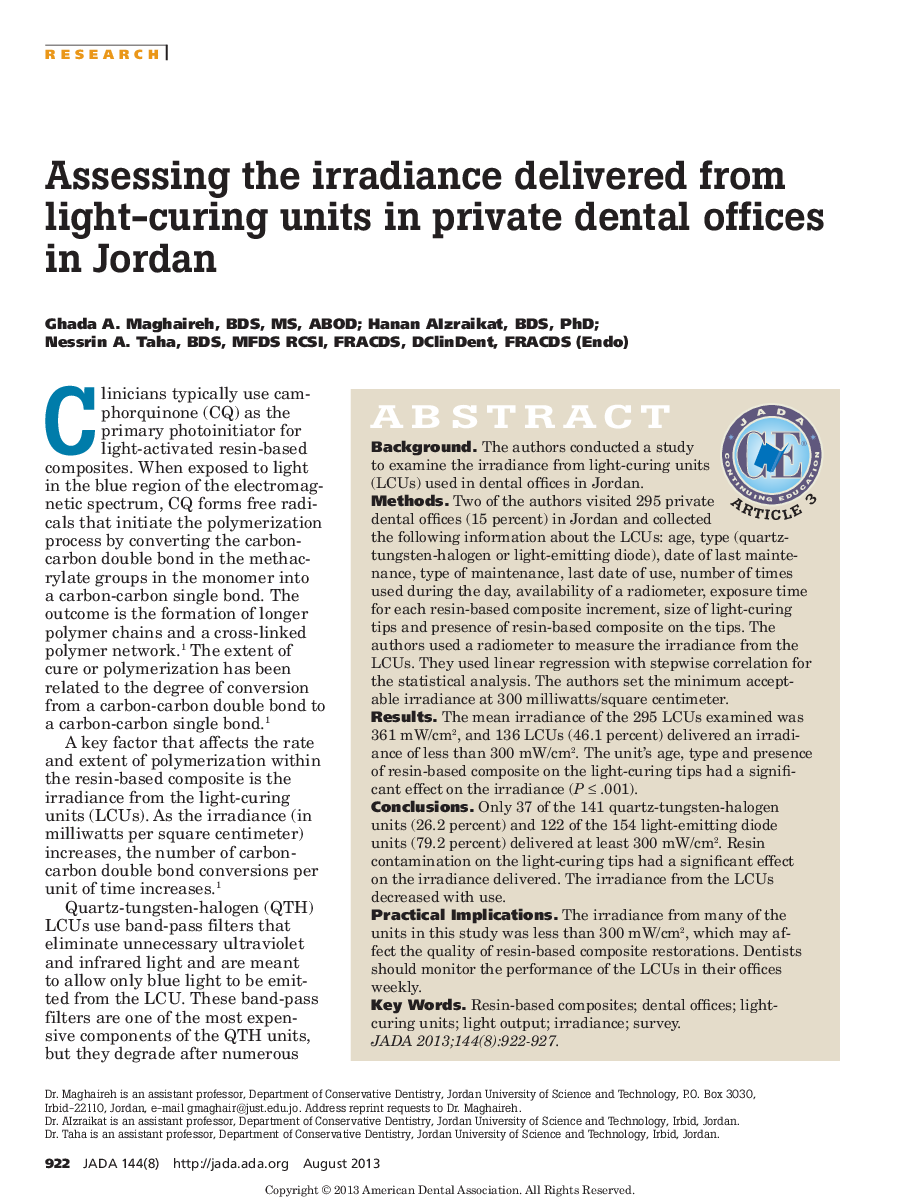| Article ID | Journal | Published Year | Pages | File Type |
|---|---|---|---|---|
| 3137639 | The Journal of the American Dental Association | 2013 | 6 Pages |
ABSTRACTBackgroundThe authors conducted a study to examine the irradiance from light-curing units (LCUs) used in dental offices in Jordan.MethodsTwo of the authors visited 295 private dental offices (15 percent) in Jordan and collected the following information about the LCUs: age, type (quartz-tungsten-halogen or light-emitting diode), date of last maintenance, type of maintenance, last date of use, number of times used during the day, availability of a radiometer, exposure time for each resin-based composite increment, size of light-curing tips and presence of resin-based composite on the tips. The authors used a radiometer to measure the irradiance from the LCUs. They used linear regression with stepwise correlation for the statistical analysis. The authors set the minimum acceptable irradiance at 300 milliwatts/square centimeter.ResultsThe mean irradiance of the 295 LCUs examined was 361 mW/cm2, and 136 LCUs (46.1 percent) delivered an irradiance of less than 300 mW/cm2. The unit's age, type and presence of resin-based composite on the light-curing tips had a significant effect on the irradiance (P ≤ .001).ConclusionsOnly 37 of the 141 quartz-tungsten-halogen units (26.2 percent) and 122 of the 154 light-emitting diode units (79.2 percent) delivered at least 300 mW/cm2. Resin contamination on the light-curing tips had a significant effect on the irradiance delivered. The irradiance from the LCUs decreased with use.Practical ImplicationsThe irradiance from many of the units in this study was less than 300 mW/cm2, which may affect the quality of resin-based composite restorations. Dentists should monitor the performance of the LCUs in their offices weekly.
